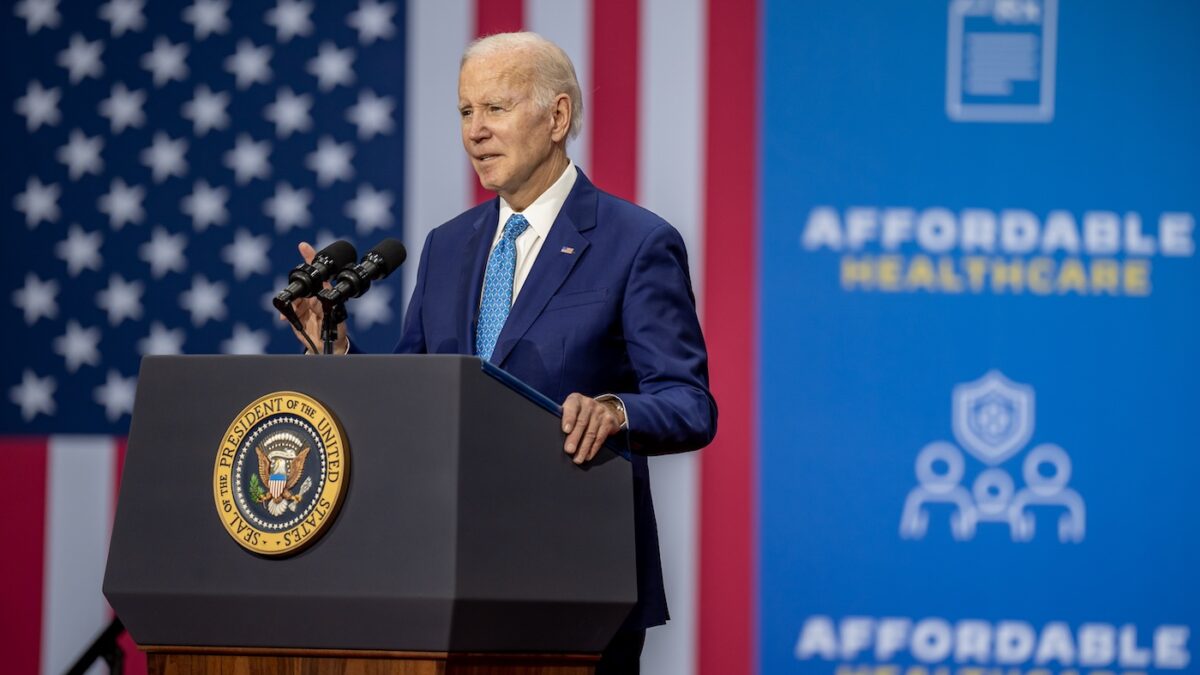
Theories abound on the state of American healthcare, insurance prices, and that strange compendium of rules and transfers known as the Affordable Care Act. But, new data on the state of insurance markets should force prognosticators to rethink their assumptions and predictions.
For the first time since the 2014 rollout of Obamacare, the rate of uninsured Americans has increased. According to the Gallup-Sharecare Well-Being Index, the share of Americans without insurance coverage increased from 10.9 percent to 12.2 percent in 2017, the largest jump since the economic downturn in 2008. But, unlike in 2008, the American economy is surging ahead with low unemployment and record high dow numbers.
To many defenders of the law, the additional 3.2 million uninsured Americans are victims of the Trump Administration and Congress’s “war” against the Obama-era law. But there’s a problem with this theory — the law remained wholly intact through the end of the year. Sure, the Trump Administration cut out some advertising and shortened the open enrollment period as 2017 came to a close. But the decrease in coverage happened before the end of the year, with the last quarter not seeing sizeable coverage changes.
Some detractors of the law have argued that premium increases are in fact driving the decrease in insurance. While insurance prices on Obamacare exchanges are indeed on the increase, this cannot be the main explanation. Gallup data shows that exchange dropouts are heavily concentrated in the population eligible for ACA subsidies, who are effectively shielded against premium increases. For the majority of folks who dropped out of ACA exchanges in 2017, health insurance premiums are capped as a percentage of income, with the federal government paying the difference between that capped amount and the actual price of the health plan.
The enrollees that stand to lose the most from the double-digit percentage increases are unsubsidized exchange shoppers, yet this population is strangely holding steady. The dropouts are young (concentrated in the 18-25 age range), but hardly those pesky “young invincibles” that the government has tried so hard to attract. If exchange dropouts were disproportionately healthy, ACA exchanges across the country would suddenly start to look a whole lot sicker. But this simply isn’t happening. According to a recent Kaiser survey of individual insurance marketplaces across the country, increases in the average claim per enrollee actually declined in 2017, and average hospital attendance for enrollees hasn’t ticked up.
This is all very weird, if you buy into the “adverse selection” argument that policymakers used for an individual mandate in the first place. Young, healthy twenty-somethings need to be forced to buy insurance, the reasoning goes, because otherwise only sick, expensive-to-insure individuals would seek policies. Insurance prices would then simply be too high, with policies out of reach for poorer individuals.
This is undoubtedly some of the story, but not the full picture. Poorer individuals, for instance, tend to be sicker after controlling for age. Studies comparing the spending-saving decisions of different income groups find that poorer people tend to value a dollar in their pocket today more highly than a dollar earned tomorrow. Thus, a pre-diabetic twenty-two year old with a meager paycheck may want to opt for skimpier coverage and use the savings to buy more things for the here-and-now (ie. tastier food). Her richer counterpart may be healthier, but is less leery about “investing” money in a product that may help her out in the future. In other words, younger people with worse health profiles tend to have other characteristics that work against adverse selection in insurance buying.
Under an individual mandate, however, these poorer, sicker individuals had little choice but to enroll in ACA marketplaces. For the average uninsured American that already pays around $800 in out-of-pocket health expenses, paying an additional $700 mandate penalty (in bulk) is simply not affordable. It doesn’t help that many Americans likely believe the mandate is far stronger than it actually is.
But then came President Trump, and actions suggesting that the Internal Revenue Service is ceasing enforcement of the individual mandate. To the median-healthed person making less than $40,000 a year, this is a cue that exiting the exchange and paying less than $1,000 a year again for care is again possible. Many Americans indeed seem to have assumed that the new administration is no longer enforcing the ACA, even though the law was enforced through 2017.
This belief is unlikely to impact the very sick, whose large immediate expenses make exchange plans worth it no matter what. Nor is it impacting richer, non-subsidized enrollees, who are more likely to set aside “just in case” money anyway. But young, low-income individuals in the “middle health” pack are flocking away from the ACA. This migration, which leaves exchange markets balanced between the sick and healthy, will likely intensify in 2018 as Americans grapple with the mandate’s repeal.
These present trends suggest that exchange markets will not unravel in the absence of the mandate, which wasn’t necessary in the first place. With the “middle-healths” out of the way, however, cross-subsidization becomes more stark. Richer twenty-somethings buying into the system will no longer be subsidizing their poorer, sicker, same-aged counterparts. Instead, they’ll be footing the bill for the very sick, who tend to be far older and therefore wealthier on average. While this can result in stable exchange markets, it makes for an unfair new status quo where the have-nots foot the bill for the haves. Having high-risk pools, where federal and state governments pay for the claims of the very-sick via income tax revenue, is surely more progressive.
But reworking insurance financing can only do so much to reverse the malady of sky-high costs. Insurance premiums are shockingly expensive because of the underlying costs of procedures. Anti-competitive laws across the country limit the supply of medical institutions and devices, ensuring that facilities remain limited to the detriment of nearly everybody.
The third-party nature of the system, enforced by unfixed tax code provisions and ACA coverage requirements, results in horror stories like the $629 band-aid. By focusing on these problems, instead of adverse-selection, America can make progress in curbing underlying prices. Pet theories unsupported by evidence will only lead to misguided policies that bilk consumers and taxpayers for hundreds of billions of dollars.









